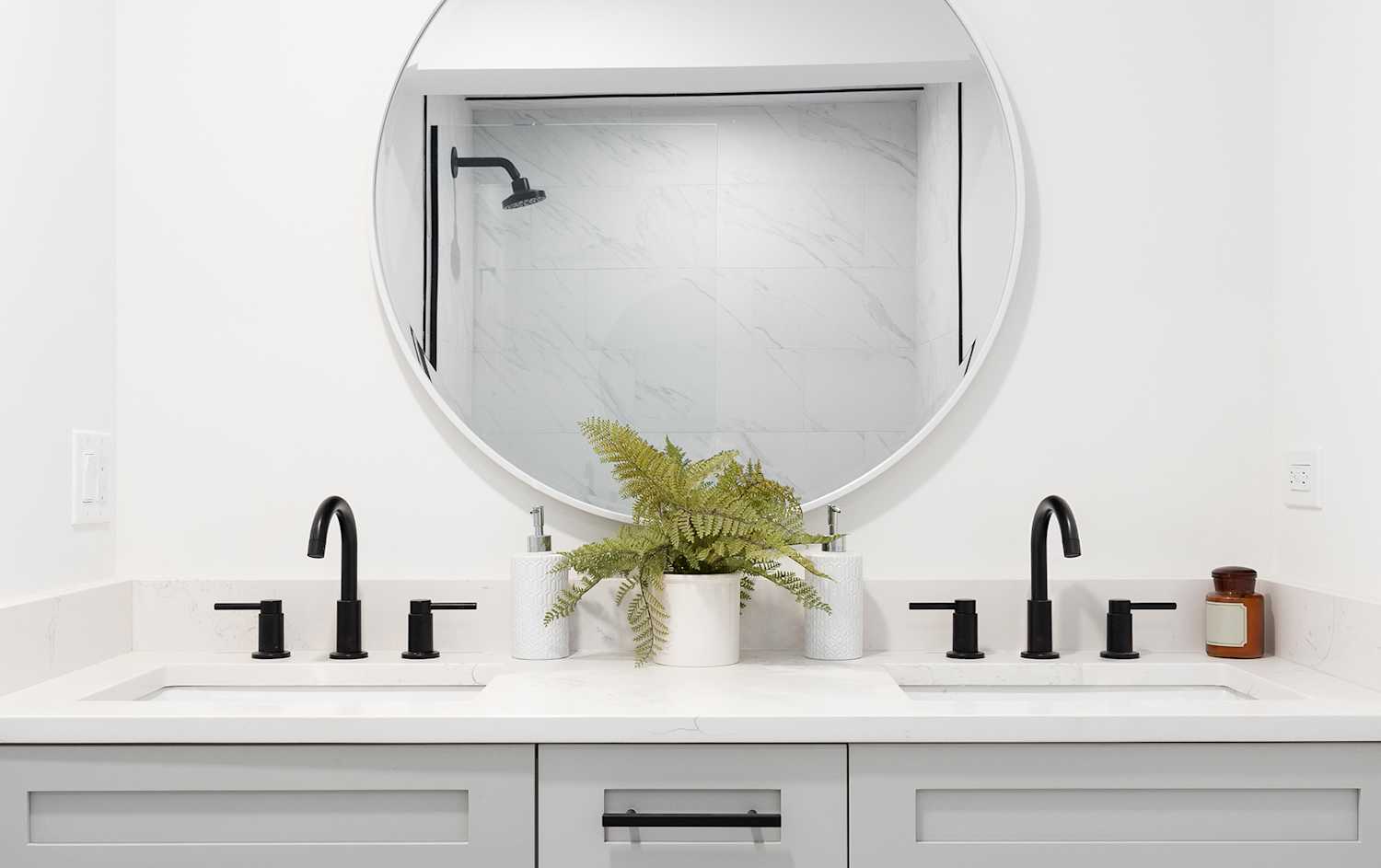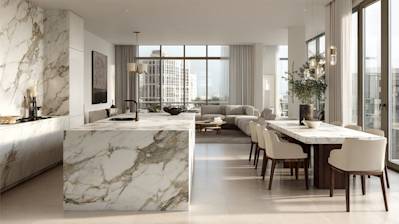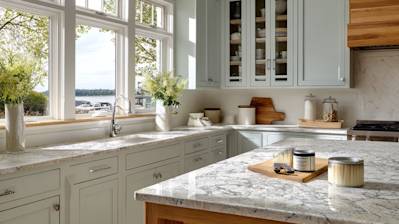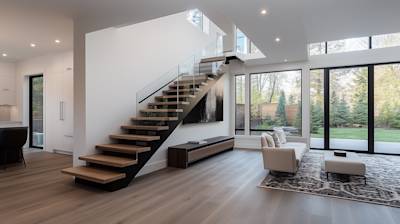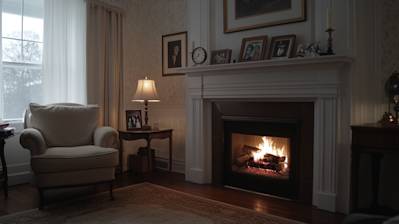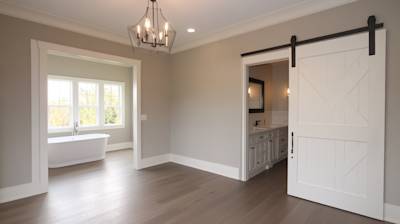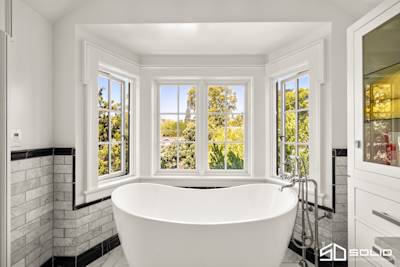If you're considering a bathroom or kitchen renovation, it's likely you've heard about cultured marble. This synthetic material mimics the appearance of natural marble but comes with a host of benefits, making it an increasingly popular choice for both homeowners and interior designers. In this article, we will delve into everything you need to know about cultured marble, from its unique manufacturing process to its various uses in a home setting. This information will assist you determine if cultured marble is the right pick for your next remodeling project.
Understand Cultured Marble
Cultured marble is a man-made product, a blend of polyester resin and crushed marble dust. The combination results in a material that looks very close to natural marble but has benefits that make it more versatile and easier to work with. It's more durable, lighter, and less expensive, and it doesn’t require the same level of maintenance—it’s far more resistant to staining, scratching, and chipping.
How is Cultured Marble Manufactured?
Understanding how cultured marble is made could help explain why it's so unique. The production process involves several steps.
-
Mixing stages: Firstly, the mix of polyester resin (approximately 75%) and crushed limestone (about 25%) is combined with pigments to create the desired coloring.
-
Mold preparation: The mixture is then poured into a mold that has been treated with a gel coat. The purpose of the gel coat (comprising of a clear or colored polyester resin) is to provide a glossy finish and assist in making the final product waterproof.
-
Hardening process: The molds are allowed to sit until the solution solidifies; air is often vacuumed out to prevent bubbles from forming within the results.
-
Finishing touches: Once the final product is set and dry, it can be buffed to achieve a glossy, smooth surface similar to natural marble.
The Versatility of Cultured Marble
One of the major advantages of cultured marble is its versatility. It can be used for a wide range of applications, making it a popular choice for the home.
-
Countertops: Cultured marble is often used for countertops due to its durability. It's resistant to staining, chipping, and can withstand heat, making it an excellent choice for bathroom vanities and kitchen counters.
-
Sinks: The material can be cast into virtually any shape and size, making it suitable for integrated sinks without any seam.
-
Showers and bathtubs: One of the most popular places for cultured marble is in showers and bathtubs. It can be molded to match the exact dimensions of your bathroom, reducing the number of grout lines and making cleaning easier.
-
Backsplashes: Because it's waterproof, cultured marble also makes an excellent choice for backsplashes in both the kitchen and bathroom.
-
Flooring: With its high strength and attractive appearance, it's also popular for flooring options in the bathroom or entrance hallway.
Cleaning and Maintenance of Cultured Marble
One of the key selling points of cultured marble is its low maintenance. Stain-resistant and waterproof, it doesn't require constant upkeep to retain its appearance. For cleaning, simply using mild soap and warm water will usually suffice. For more stubborn stains, a slightly abrasive cleaner may be used. However, care must be taken to not use harsh chemicals, as these can dull the glossy finish over time. Cultured marble does not have to be sealed like its natural counterpart, making it far more resistant and easier to maintain.
While the charm of real marble may be irresistible to some, the practical benefits and cost-effectiveness of cultured marble are impossible to ignore. Easily maintained, durable, and versatile in design possibilities, cultured marble can truly elevate the aesthetics of your home while making life simpler and more carefree. Truly understanding what cultured marble is will help you make an informed decision about whether it's the right fit for your home's needs, whether it's for your kitchen, bathroom, or any other room in your home.
Frequently Asked Questions about Cultured Marble
What are the Key Features of Cultured Marble?
Cultured marble is highly appreciated for its durability, easy maintenance, and its ability to emulate the elegance of natural marble. Moreover, it's customizable in terms of color and patterns, making it a versatile choice for interior designs.
Is Cultured Marble Expensive?
The cost of cultured marble varies depending on the size, design, and seller. However, it tends to be more affordable than natural marble, while providing a similar aesthetic.
Can Cultured Marble Be Used in Bathrooms?
Yes, absolutely. Cultured marble is often used in bathrooms for countertops, sinks, shower pans, and wall panels. The non-porous nature of cultured marble makes it resistant to staining, mildew, and mold, making it a perfect choice for moist, high-traffic areas like the bathroom.
Can Cultured Marble Be Refinished?
Yes, it can be refinished if it gets scratched or dull over time. The process generally involves sanding the surface and then buffing it with a gel coat to restore its shine and smoothness. It's often advised to seek professional help to refinish cultured marble, as the process can be tricky for non-experts.
Does Cultured Marble Discolor Over Time?
While it's less likely than natural marble, cultured marble can discolor over time, especially if exposed to harsh chemicals or direct sunlight. Regular care and maintenance, including the use of appropriate cleaning agents, can help maintain its color and shine.
How Do You Clean Cultured Marble?
It's usually recommended to clean cultured marble with a non-abrasive cleaner and soft cloth. Avoid harsh chemicals, as these can dull the surface. Warm water and mild soap often work well for regular cleaning.
Can You Put Hot Items on Cultured Marble?
While cultured marble is resistant to heat, it's generally advised to avoid placing hot items directly onto its surface. The use of trivets or heat pads is recommended to prevent potential damage or discoloration.
Can Cultured Marble Be Repaired?
Yes, minor chips, cracks, or scratches in cultured marble can often be repaired. Many companies offer repair kits or professional services specifically for cultured marble products. The repair process typically includes filling the damaged area, sanding it down, and then polishing it to match the rest of the surface.
Who Uses Cultured Marble?
Cultured marble is used by many different people and industries. Homeowners use it in their bathrooms and kitchens for its beauty and durability. Builders and architects favor it for its design versatility and cost-effectiveness. Even RV manufacturers use cultured marble for shower surrounds due to its lightweight nature.
Pros and Cons of Cultured Marble
Pros of Cultured Marble
1. Easy Installation
Cultured marble is quite easy to install, particularly when compared to natural marble. Since it is a man-made product, it is created in a factory setting, which makes it easier to contro. As a result, it fits well in different variations and can be easily adjusted to fit a certain space.
2. Durability
Cultured marble tends to be more durable than traditional marble. It is made by combining marble dust and polyester resins. The high durability of cultured marble makes it perfect for high-traffic areas in the home, including bathrooms and kitchens.
3. Cost-Effectiveness
The overall cost of cultured marble tends to be lower than its natural counterpart. This less expensive option makes it an appealing choice for many homeowners looking to incorporate marble looks while on a budget.
4. Range of Design Options
- Cultured marble is customizable and offers an extensive range of color and pattern options, which can easily mimic various types of marble.
- It can also be moulded into various shapes and sizes, making it an excellent choice for tailor-made bathroom features like bathtubs, countertops, and sinks.
5. Easy Maintenance
Another big advantage of cultured marble is its maintenance. It doesn't require the same rigorous care that natural marble does. Cultured marble surfaces are non-porous, which means stains and blemishes can be easily cleaned off.
Cons of Cultured Marble
1. Aesthetic Appeal
While cultured marble can mimic the appearance of natural marble, it cannot perfectly replicate it. Some people may feel that cultured marble lacks the depth and unique features that come with natural marble.
2. Susceptibility to Scratches
Cultured marble surfaces are slightly softer than their natural counterparts, and they can be susceptible to scratches. These scratches can be particularly noticeable in darker shades of cultured marble.
3. Heat Resistance
Another downside of using cultured marble in areas like the kitchen is its heat resistance. Placing a hot pan or utensil directly from the stove to the countertop can result in thermal shock, leading to cracks on the surface.
4. Repair
- While cultured marble has a high-fidelity surface, once damaged, it can be complicated to repair. Since it's not a natural stone, the repair process often involves professional help and can be quite costly.
- Moreover, severe damage to a cultured marble surface cannot be fixed by simply refinishing the surface, and entire replacement might be necessary, adding extra costs for homeowners.
5. Resale Value
Though cultured marble provides a similar look to natural marble, it doesn't quite match its value in the real estate market. Homes featuring real natural marble tend to see a higher resale value than homes that use cultured marble.
Summary
Cultured marble is a fantastic choice for homeowners aiming for an elegant and luxurious feeling in their spaces. Its sheer beauty, durability, and ease of maintenance make it a popular choice for countertops, vanities, and flooring. Moreover, this engineered stone offers the look of real marble for a fraction of the cost.
Next time you're renovating a bathroom or kitchen, consider cultured marble. Its wide variety of colors and patterns will make it easy to find the right fit for your style. Not only will it give your space a high-end look, but the surface is also easy to clean and highly resistant to stains, scratches, and chips.
At the end of the day, the decision to use cultured marble is all about preference and practicality. It delivers the beauty, versatility, and durability that is hard to find in other materials. So, when you add in the affordability factor, cultured marble becomes an easy choice for discerning homeowners. You'll have a stunning and long-lasting finish that stands up to daily use and enhances the value of your home.
About Solid Construction & Design
Welcome to Solid Construction & Design, the leading builder based in Sacramento, CA. We are a family-owned business, uniquely blending innovation with tradition to deliver high-quality construction and design solutions. From home remodeling to custom homes, kitchen and bathroom renovations, and other construction services, we bring your dream home to reality. With us, you get a perfect blend of exceptional craftsmanship, transparent pricing, and timeless results.

